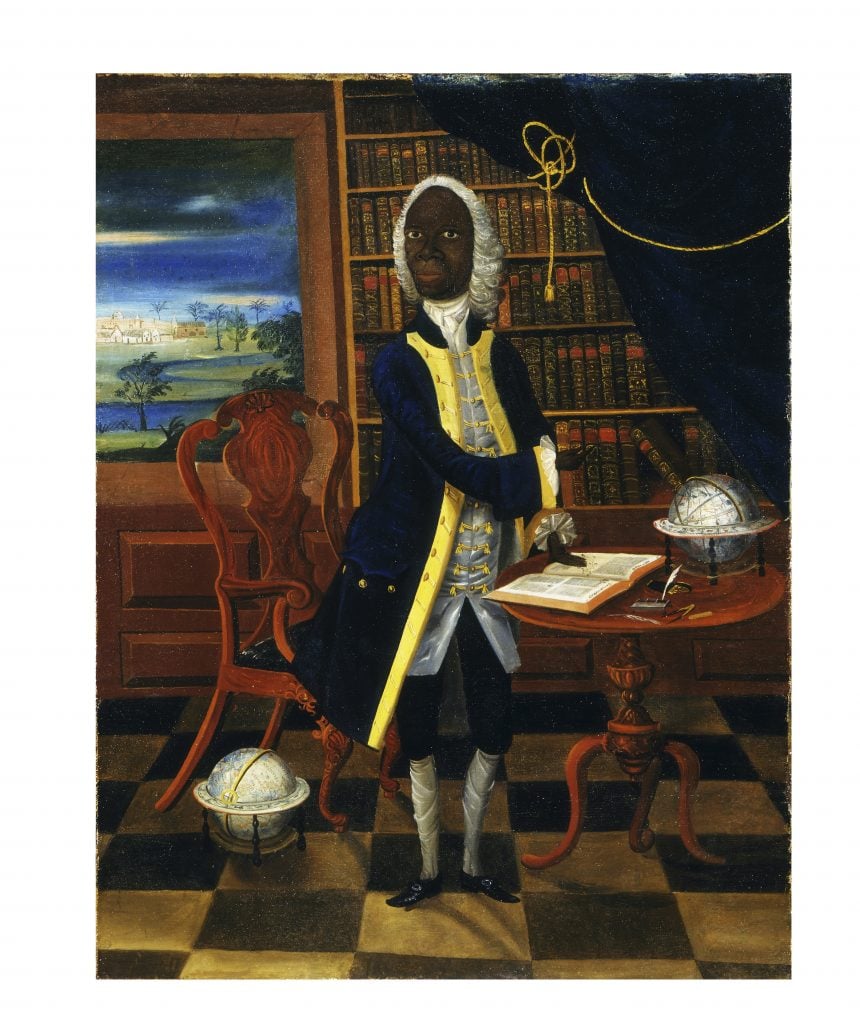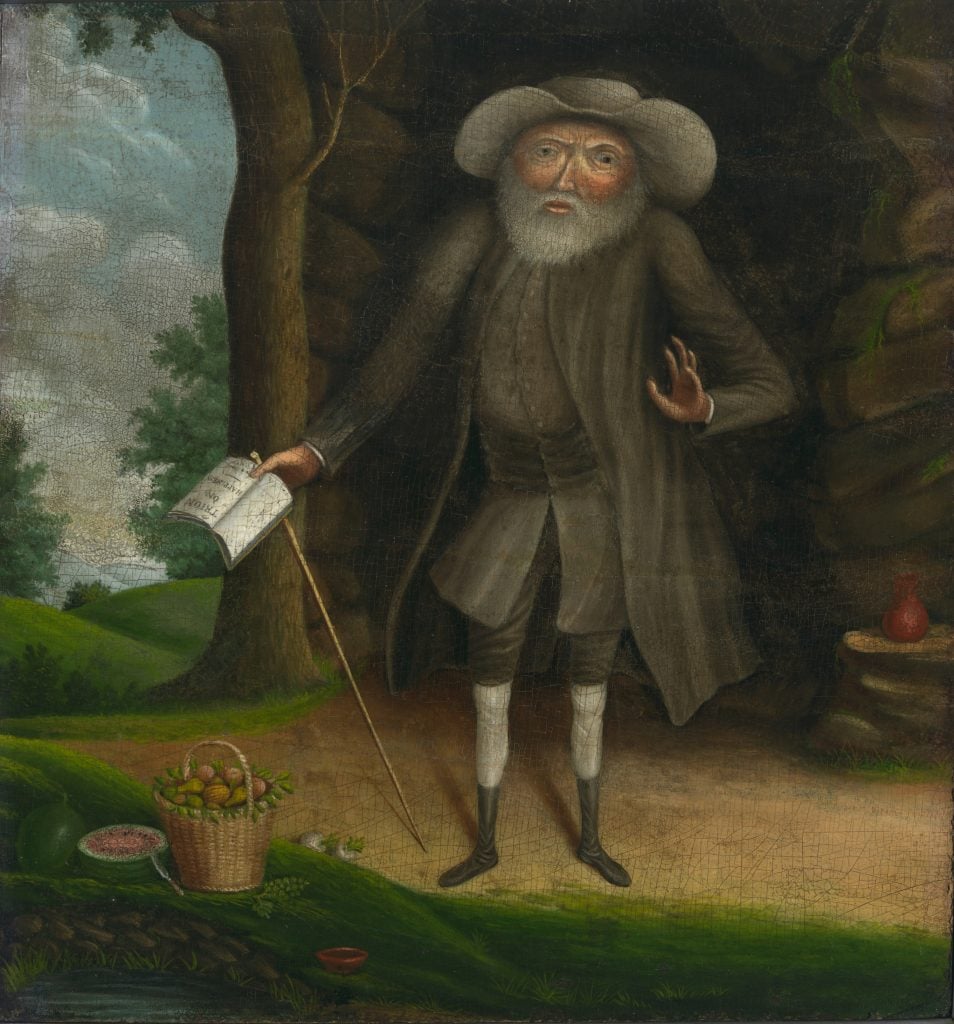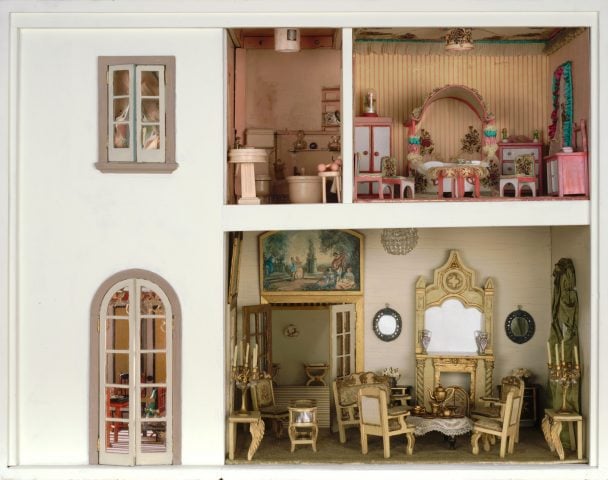Art History
Long-Overlooked Painting Reveals the Genius of a Forgotten Black Polymath
Scientific analysis is correcting centuries of misconception surrounding a Francis Williams portrait.

In 2023, The Royal Society, the storied U.K. science academy, elected the first Black person to its fellowship. It might have done so some 300 years earlier were it not for prejudice of its members. That individual, Francis Williams, a polymath who was born into enslavement in Jamaica, had been proposed in 1716 as a 22-year-old at a meeting attended by Isaac Newton and Edmund Halley, only to be denied “on account of his complexion.”
While Williams endured scorn and rejection from a white supremacist society for much of his life, in the end, he scored a glorious scientific triumph. It’s a story explicitly told in a painting Williams had commissioned in his final years as an affluent plantation owner, though one that has only just been rediscovered by Fara Dabhoiwala, a historian at Princeton University.
Until Dabhoiwala began examining the painting in the collection of London’s Victoria and Albert Museum two years ago, it wasn’t known who, when, or why the work was created. Not that the V&A was originally interested in the painting’s subject: the museum acquired the work in 1928 and hung it in the furniture galleries to illustrate its collection of 18th-century woodwork.
The curator responsible for the acquisition, Harold Clifford Smith, dated it to the mid-1730s and called it “a curious, satirical portrait recording a failed experiment in Negro education.” This gross misconception stemmed from the main source on Williams, the chapter devoted to him in Edward Long’s exhaustive History of Jamaica, which Dabhoiwala calls “a hostile hatchet job full of lies and half-truths, meant to show Black people were inferior.”
Long’s contempt, Dabhoiwala suggested, stemmed partly from simple racism and partly from intellectual inferiority. Williams was arguably the most famous Black intellectual of the 18th century and alongside studies at Cambridge University had joined discussions of Newtonian physics. Most crucial was Halley’s theory that the trajectory of comets could be predicted based on Newton’s laws of motion and gravity. When in 1759 the comet did indeed drag its tail across the sky, it was momentous, clarifying a rational, enlightened outlook on the world. Newton and Halley were long dead, but Williams was present to measure and record the moment.
Working from high-resolution images, Dabhoiwala has shown that the painting celebrates this event. The book on the table is Newton’s Principia and it’s opened to page 521, which outlines plotting the longitude and latitude of a comet based on the constellations in the sky. Beside the book are the mathematical instruments used to make such calculations and over Williams’s shoulder is a dusk view of the Jamaican countryside with the comet accompanied by the appropriate constellations. According to Dabhoiwala, the painting’s message is: “I, Francis Williams, a free Black man from Jamaica witnessed the return of Halley’s comet and I calculated its trajectory according to Newton’s Principia.”

William Williams, Portrait of Benjamin Lay (ca. 1750 to 1758). Photo: The Smithsonian National Portrait Gallery.
As for the painting’s creator, Dabhoiwala is confident it’s the work of William Williams, an English-American artist who traveled to Jamaica in the 1760s. The comet together with the appearance of Johnson’s Dictionary, which was first published in 1755, align with this timing and the painting’s style is similar to other early Williams portraits of Benjamin Lay, a Quaker abolitionist, and Hendrick Theyanoguin, a Mohawk Indian. Williams often worked from a triple layer of underpaint (perhaps learned from painting boats in Philadelphia) and Dabhoiwala hopes further testing on the portrait will prove the case definitely.
“It’s the only painting made anywhere in the world showing Halley’s comet on its first predicted return,” Dabhoiwala said. In the coming years, it’s hoped the painting will make a return of its own and be lent to the National Gallery of Jamaica.





